If you’re confused about what grass seed to use – you are not alone! Not all turfgrasses are created equal, and not all grass seed products are right for Oklahoma. That’s why asking local Plant Professionals at TLC is the smart choice for Oklahoma lawns.
The geographic location of Oklahoma permits turfgrass species popular in the north, south, east, and west environments of the United States to be grown somewhere in the state. However, almost all of them fall into one of these two types:
- Warm season grasses (grows in the summer, dormant in the winter) thrive in warm regions like the southern United States. Oklahoma’s relatively low temperatures during the winter prohibit the success of many warm season grasses, such as St. Augustine. Warm season grasses do not tolerate shady sites.
- Cool season grasses that are more common in the north and northeast and can handle extreme temperature fluctuations. Oklahoma’s high temperatures and limited rainfall during the summer limit the success of the cool season grasses to shaded areas.
Oklahomans know that our unpredictable weather is hard to categorize, and that’s why you’ll see some of each represented in most lawns in our region. Below are the most common turfgrasses for TLC Customers. The first step to achieving the perfect lawn is knowing what you are working with.
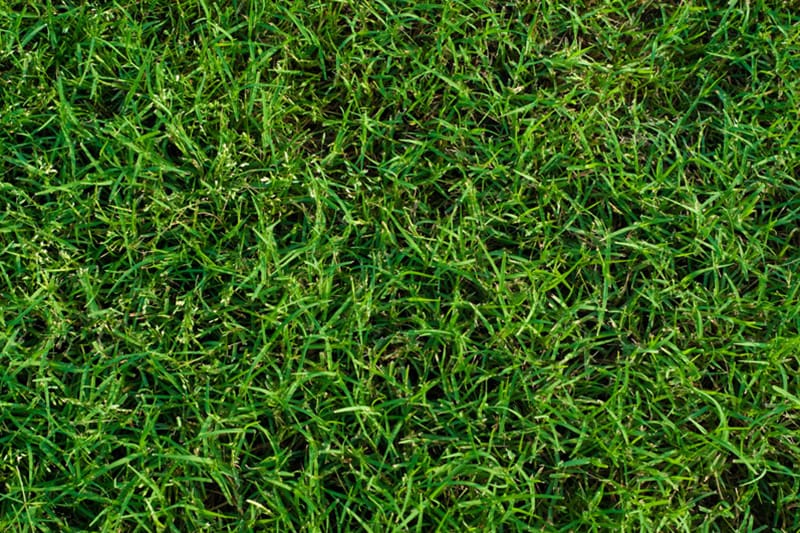
Bermuda Grass
Warm Season
Bermuda grass is the warm-season turfgrass species most commonly planted in Oklahoma. Bermuda makes for a nice home lawn because it forms a thick, dense turf, but can also tolerate a low mowing height. In Oklahoma, Bermuda is common for sunny areas, with excellent heat and drought tolerance. Water, fertilization, and mowing needs are frequent.
Best seed planting dates are May 15 to August 15
- Blade: Sharp, pointed, 1/8” wide
- Color/Texture: Deep green, dense
- Growth: Dense, close cut
- Water: Frequently
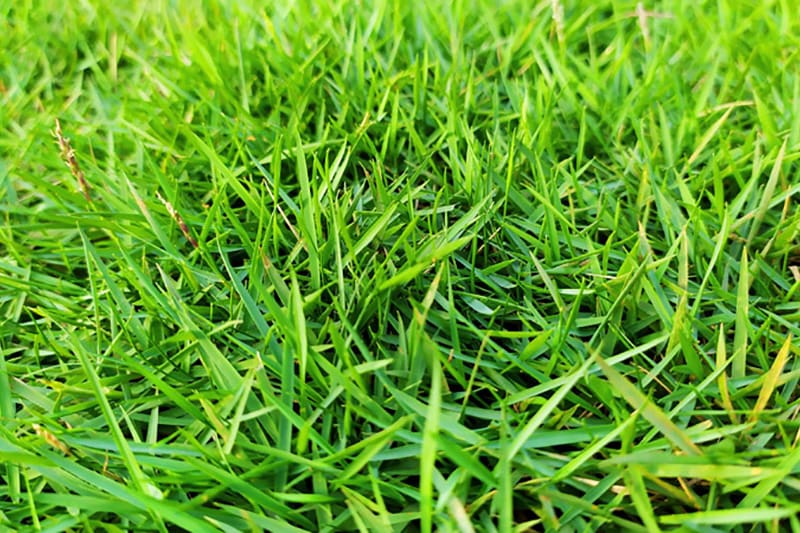
Zoysia Grass
Warm Season
Zoysia grass forms a lawn that feels like a thick, prickly carpet, and quickly turns brown in cold weather. It is very slow-growing— establishing a zoysia grass lawn can take up to a year. It has stiff leaf blades and will produce numerous seed heads if it isn’t mowed.
Best seed planting dates are May 15 to August 15
- Blade: Narrow, needle-like
- Color/Texture: Prickly, stiff, carpet-like
- Growth: Slow
- Water: Average
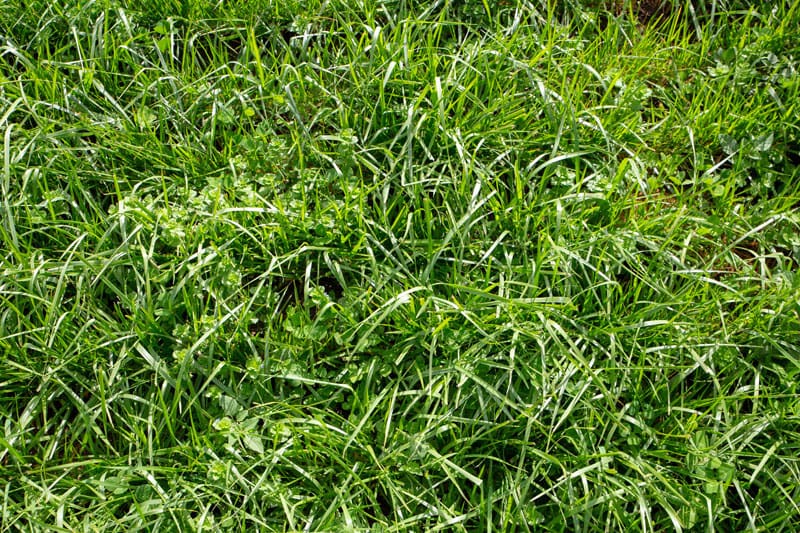
Tall Fescue
Cool Season
While tall fescue is a cool season grass, it is also heat-tolerant. In Oklahoma, it is commonly used for shady areas. It is a “bunch grass,” which allows it to germinate quickly and withstand heavy foot traffic.
Best seed planting dates are March 15 to May 15 and September 15 to October 31
- Blade: Pointed, visible veins, 3/16” wide
- Color/Texture: Dark green, coarse, stiff
- Growth: Clumps
- Water: Frequently
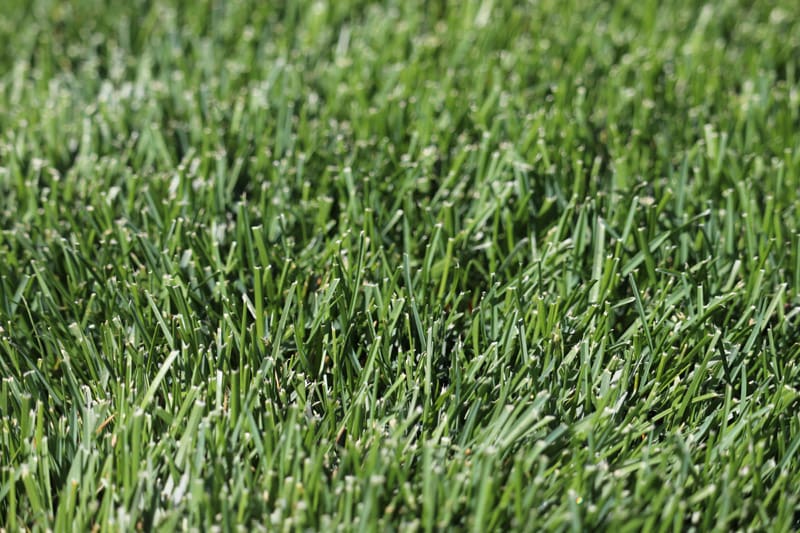
Kentucky Bluegrass
Cool Season
Kentucky bluegrass is very common in the northern US. In Oklahoma, it is most frequently found in a shade mix, including TLC Sun & Shade Mix. Most varieties prefer full sun, but will require more water than Bermuda grass.
Best seed planting dates are March 15 to May 15 and September 15 to October 31
- Blade: V-shaped, pointed, 1/8” wide
- Color/Texture: Emerald to blue-green, soft
- Growth: Rapid, aggressive
- Water: Average
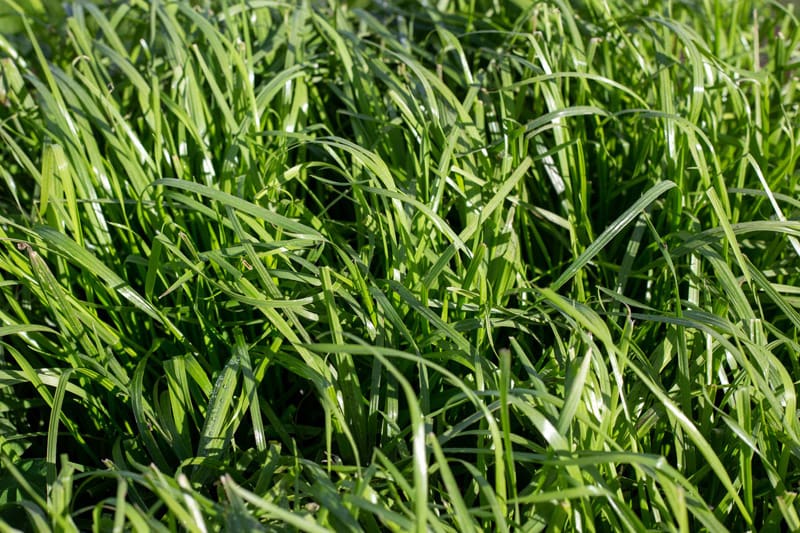
Ryegrass
Cool Season
Most Ryegrass in Oklahoma is part of a mix. Annual Rye is used to stabilize soils until Bermuda can be planted in hot weather. Perennial Rye is used in shade mixes, including TLC Sun & Shade Mix. It is also used to overseed Bermuda grass to provide green grass in the winter months when the Bermuda is brown and dormant. Ryegrass is easy to spot in a lawn due to its shine, and it is a quick-germinating “bunch grass.”
Best seed planting dates are March 15 to May 15 and September 15 to October 31
- Blade: Pointed, visible veins, 1/8” wide
- Color/Texture: Dark green, soft
- Growth: Quick, bunch type
- Water: Average
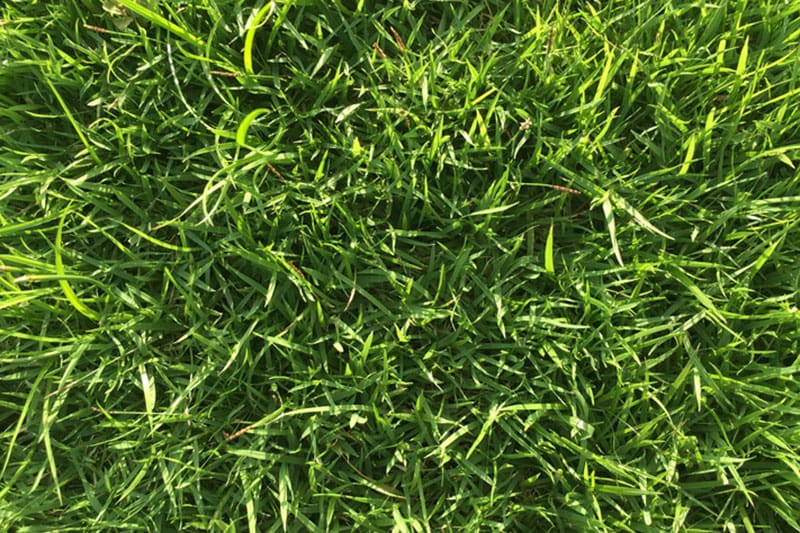
Fescue / Rye / Bluegrass
Cool Season
This is a common mix, used frequently for shady areas in Oklahoma. Fescues are used in mixes due to their tolerance of shade, foot traffic, cold, and drought. Ryegrass is included for its fine texture and glossy green color, but does not tolerate extreme cold or drought. Kentucky bluegrass is used to fill the sunnier areas of a shade planting.
Best seed planting dates are March 15 to May 15 and September 15 to October 31
- Blade: Thin, tall
- Color/Texture: Soft with coarse mix, dense
- Growth: Average to tall, via rhizomes
- Water: Average